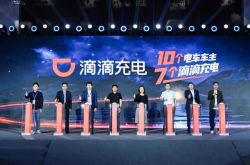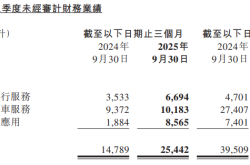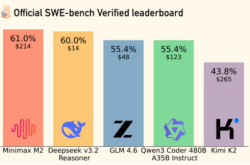What Are the Respective Strengths of Traditional Automakers and New Car-Making Forces in Autonomous Driving Technology?
![]() 10/13 2025
10/13 2025
![]() 642
642
Before delving into today's topic, I'd like to emphasize that this discussion is not about labeling any particular group but rather about elucidating the key capabilities that shape the research, development, and deployment of autonomous driving technology. Autonomous driving encompasses not just sensors and perception algorithms but also vehicle system engineering, verification methodologies, regulatory compliance, after-sales operations and maintenance, and business models. Different types of companies focus on distinct facets of these interconnected elements. Understanding their respective strengths aids in evaluating the feasibility of technology roadmaps, organizational transformations, and commercialization pathways. We also encourage you to leave comments and share your insights regarding your company and work.
Core Strengths and Technological Foundations of Traditional Automakers
Traditional automakers boast years of accumulated expertise in vehicle engineering and mass production capabilities. This extends beyond mere production line capacity to encompass the overall ability to transform a complex system into a reliable product. Autonomous driving must ultimately be integrated into vehicles and function reliably under diverse real-world conditions, including extreme temperatures, vibrations, and electromagnetic interference. This entails intricate details such as automotive-grade electronics, power management, thermal management, wiring harness design, and cooling systems. Traditional automakers possess mature processes and engineering teams in these domains. They understand how to seamlessly integrate sensors and computing modules into the vehicle architecture, devise thermal solutions to ensure the stable operation of high-performance chips in real-world driving scenarios, and guarantee a consistent power supply across various driving conditions through meticulous vehicle power design. Transitioning an AI-centric function from prototype to mass production at a scale of 100,000 units involves a substantial amount of engineering precision, an area where traditional automakers excel.
Traditional automakers also enjoy advantages in supply chain management and component compliance. The supply capacity of automotive-grade components, long-term lifecycle support, and replacement part networks are all integral to the commercialization of autonomous driving. For automakers, selecting a LiDAR sensor or chip entails considering not only performance but also supply capacity, reliability data, and vehicle verification costs. Traditional automakers have established contracts and quality control systems with a network of long-term Tier 1 and Tier 2 suppliers, which helps mitigate risks during mass production. Additionally, traditional automakers possess more extensive experience in regulatory and functional safety systems. Adhering to ISO 26262 standards, conducting failure mode analysis, organizing crash and electromagnetic compatibility tests, and preparing processes for recalls and legal responses are all indispensable capabilities when bringing autonomous driving to market.
When it comes to after-sales and on-site operation and maintenance capabilities, traditional automakers typically boast service networks and technical support teams spanning the entire country or even globally. After the launch of autonomous driving functions, the ability to perform over-the-air (OTA) updates, fault diagnosis, remote rollback, and offline repairs is crucial for user experience and safety. Traditional automakers can leverage these offline services in conjunction with their dealership channels to provide swift resolution for software or hardware issues, a particularly critical aspect in the early commercialization stage of autonomous driving. In terms of financial resources and risk tolerance, traditional automakers are also better positioned to support long-term, capital-intensive R&D and trial-and-error processes, enabling them to persist in investing and completing engineering milestones despite significant obstacles.
Advantages of New Car-Making Forces in Software and Data-Driven Approaches
New car-making forces typically prioritize software and data as their core, featuring flatter organizational structures and faster iteration cycles. They excel at leveraging software engineering methodologies to drive functional deployment. They often invest early and heavily in data collection, end-to-end training pipelines, data annotation, and simulation platforms. Some view autonomous driving as a 'data-driven' vehicle, a perspective that is not merely theoretical but a critical direction for its practical implementation. The key requirement here is the ability to establish a high-quality data loop, rapidly transmitting online issues, reproducing them in simulations or local playback, labeling them in datasets for model training, and then validating the models through grayscale deployment. New car-making forces are generally more agile in constructing such loops, designing iteration frameworks, and establishing rapid validation processes.
Another significant advantage of new car-making forces lies in their software architecture and productization strategies. Many new companies design OTA updates, A/B testing, telemetry, and online diagnostics as fundamental capabilities from the outset. This enables them to rapidly iterate perception models and decision-making strategies with a software-centric approach. When it comes to innovation in perception algorithms and the adoption of deep learning models, new car-making forces are more willing to experiment with advanced models, leveraging large-scale GPU clusters and cloud computing power for training, and designing systems with cloud-edge collaboration as the norm. The benefit is faster corrections for newly emerging scenarios and edge cases, with noticeable performance improvements in short cycles.
Organizational culture and recruitment are also strengths of new car-making forces. These companies are more attractive when hiring AI, data engineering, backend cloud services, and frontend UX talent. They can closely integrate product managers, engineers, and researchers to drive rapid evolution of functions from algorithmic prototypes to product forms. Iteration of user experience, linkage between mobile and in-vehicle systems, and direct-to-consumer commercialization strategies (e.g., subscriptions and payments for L2+ functions) are areas where new car-making forces excel. In short, they possess a clear advantage in the ability to 'continuously improve software and rapidly deliver enhancements to users.'
Technological Dimension Comparison
In terms of hardware deployment for autonomous driving vehicles, new car-making forces often lean towards visual plus deep learning methods, attempting to achieve robust models with fewer or more streamlined sensors. Traditional automakers, on the other hand, tend to favor sensor redundancy fusion strategies, often requiring more perception hardware and multi-scenario testing to enhance robustness. There is no absolute right or wrong in technology selection; the key lies in target scenarios and cost constraints. If the goal is to achieve high redundancy to meet stringent functional safety requirements, multi-sensor fusion is a more conservative and reliable path. If the aim is to reach a broader range of mass-produced vehicle models at a lower cost, a vision-first or vision-dominant approach supplemented by a small number of radar sensors can be more commercially attractive, but it necessitates very strong data and algorithmic capabilities to compensate for sensor limitations.
When it comes to computing power and hardware platform selection, new car-making forces generally prefer the latest AI chips and flexible SoC+GPU combinations, placing heavy emphasis on cloud-based training. Traditional automakers, however, pay more attention to automotive-grade certification, durability, supply stability, and thermal/electrical constraints of the entire vehicle when selecting chips. In actual product production, onboard computing power must operate under limited power budgets and space cooling conditions, requiring collaborative design between hardware engineering and software. The long-term experience of traditional automakers is highly valuable here, but new car-making forces also demonstrate strong capabilities in rapidly introducing leading architectures and optimizing inference efficiency.
Software architecture and release processes are another dimension that determines long-term competitiveness. Supporting grayscale releases, rollbacks, security sandboxes, and rigorous regression testing systems is crucial for deploying frequently changing algorithms into real vehicle fleets without causing accidents. New car-making forces have inherent advantages in DevOps, CI/CD, and observability design, but integrating these agile processes with functional safety requirements is no small feat. Traditional automakers need to merge rigorous verification and validation (V&V) processes with agile software release mechanisms, which requires organizational and process transformations as well as toolchain investments.
Verification and V&V (Verification & Validation) are pain points for the entire industry. Relying solely on road testing cannot cover all rare edge scenarios, making simulation, synthetic data, and scenario generation technologies important supplements. An ideal verification system should combine long-term stability verification from real-world road testing with rare scenario coverage based on big data simulations while maintaining reproducible playback and problem-locating capabilities. Traditional automakers have advantages in physical test tracks, crash test stands, and long-term durability testing, while new car-making forces are more flexible in large-scale data playback, synthetic scenario generation, and rapid regression verification.
Differences in Commercialization, Operations, and Ecosystems
From a commercialization perspective, traditional automakers have mature sales, insurance, distribution, and after-sales systems, which are crucial for deploying autonomous driving functions in mass-produced vehicles and ensuring long-term operation and maintenance. Autonomous driving functions do not end with the sale of a vehicle; OTA updates, accident liability determination, warranty, and recall mechanisms all require supporting operational systems. New car-making forces are more flexible in direct-to-consumer engagement, online operations, service subscriptions, and software-based monetization. They excel at using data-driven product thinking to design payment models and value-added services.
In reality, no single company can excel in all areas. To achieve success in autonomous driving, collaboration among multiple parties is essential. Currently, some traditional automakers are partnering with autonomous driving companies, AI chip providers, cloud service providers, and mobility platforms. Through technology licensing, joint development, contract manufacturing, and capital cooperation, they engage in deep collaboration. For such partnerships, the key is to clearly define boundaries, interfaces, and quality thresholds to avoid 'unclear responsibility' situations during system integration.
Final Thoughts
Traditional automakers possess clear advantages in vehicle engineering, supply chain management, and compliance operation and maintenance, while new car-making forces offer greater flexibility in data, rapid iteration, and software productization. The maturity of autonomous driving will not be a process where one side completely overwhelms the other but rather requires the integration of capabilities from multiple parties, ecosystem restructuring, and collaborative division of labor. Teams or ecosystems that can combine software agility and data loop capabilities with vehicle-level engineering strength, safety compliance, and operation and maintenance networks will be more likely to transform technology into scalable, safe, and sustainable products.
-- END --






